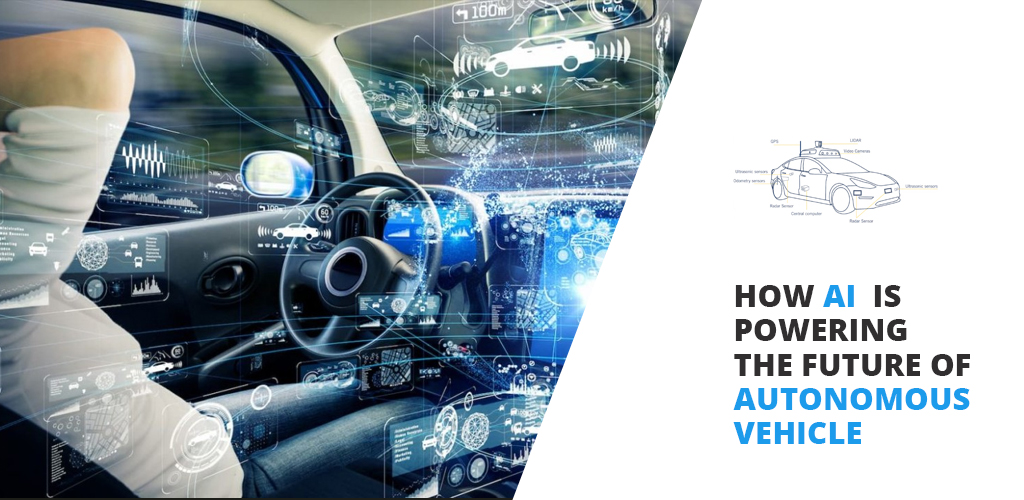The rapid development of AI in autonomous vehicles is driving the future of transportation. Self-driving cars promise to revolutionize the way we travel, offering increased safety, efficiency, and convenience. By using advanced AI-powered technology, these vehicles can navigate roads, make real-time decisions, and even avoid potential hazards without human intervention. But despite the technological strides, a key question remains: Are we ready for self-driving cars? In this article, we’ll explore the crucial role of AI in self-driving technology, the challenges facing this industry, and how soon we might see fully autonomous vehicles on the road.
What is an Autonomous Vehicle?
An autonomous vehicle (also known as a self-driving car) is a car capable of navigating and operating without human input. It uses a combination of AI, sensors, cameras, radar, and machine learning algorithms to perceive its environment, make decisions, and drive to its destination. The ultimate goal is to create a system that can safely transport passengers from point A to point B without any human intervention.
The Role of AI in Self-Driving Cars
Artificial intelligence is the backbone of self-driving technology. AI enables autonomous vehicles to learn from data, detect objects, recognize patterns, and make real-time decisions, much like how a human driver would. Here’s how AI contributes to the development of autonomous vehicles:
- Perception and Sensing AI allows the vehicle to gather and interpret data from various sensors like cameras, lidar, and radar. This data helps the car understand its surroundings, including other vehicles, pedestrians, traffic signs, and obstacles. AI can process this information far faster than humans and provide real-time analysis, ensuring the vehicle makes the right decisions at every moment.
- Navigation and Path Planning AI-powered algorithms help autonomous vehicles plot the best route to a destination. These algorithms consider factors like traffic conditions, road quality, and real-time data to adjust the path. With the help of GPS and machine learning, these systems can constantly improve and adapt to new environments, making them more reliable over time.
- Decision Making One of the most critical aspects of a self-driving car is the ability to make split-second decisions. AI systems analyze real-time data to make driving decisions, such as changing lanes, stopping at a traffic light, or avoiding an obstacle. This decision-making process is powered by deep learning algorithms that simulate the decision patterns of human drivers.
- Safety Features AI contributes to the safety of autonomous vehicles by detecting potential hazards and taking preventative actions. For example, if a pedestrian suddenly crosses the street, the AI system can react instantly, braking or swerving to avoid an accident. These advanced driver-assistance systems (ADAS) are designed to reduce human errors, making roads safer for everyone.
Are We Ready for Self-Driving Cars?
While AI in autonomous vehicles has made remarkable progress, fully autonomous cars are not yet a common sight on our roads. Here are a few key factors that will determine whether we’re ready for self-driving cars:
1. Technological Advancements
The technology behind autonomous vehicles is improving rapidly, but it still has limitations. Issues like poor weather conditions, complex traffic scenarios, and unexpected obstacles remain challenging for AI systems. 5G technology, which offers faster and more reliable communication, is expected to further enhance the performance of autonomous vehicles, making real-time data processing even faster.
2. Legal and Regulatory Challenges
One of the biggest hurdles in the widespread adoption of self-driving cars is the lack of a standardized legal framework. Governments and regulatory bodies are still figuring out how to classify, monitor, and manage autonomous vehicles on public roads. Laws surrounding liability in case of accidents, insurance, and public safety need to be updated before fully autonomous cars can become mainstream.
3. Public Trust and Acceptance
Trusting AI to control a vehicle without human intervention is a big step for many people. Surveys show that a significant portion of the public remains skeptical about the safety of self-driving cars. Building trust will require time, proven reliability, and consistent safety records from the manufacturers of autonomous vehicles.
4. Infrastructure Readiness
Our current road infrastructure is designed for human drivers. For self-driving cars to operate efficiently, we may need smart roads equipped with sensors, better traffic management systems, and improved connectivity. Investing in infrastructure is crucial for the seamless integration of autonomous vehicles into society.
The Benefits of AI in Autonomous Vehicles
Despite the challenges, the benefits of AI in autonomous vehicles are substantial:
- Increased Safety: AI reduces the risk of human error, which is the leading cause of accidents. Self-driving cars can potentially make roads safer for both drivers and pedestrians.
- Improved Traffic Management: AI can optimize traffic flow by reducing congestion, improving fuel efficiency, and minimizing delays. In the long run, this could reduce emissions and improve air quality.
- Accessibility: Autonomous vehicles have the potential to provide mobility solutions for individuals who are unable to drive, such as the elderly or disabled.
- Cost Efficiency: AI can optimize driving habits, reduce the wear and tear on vehicles, and improve fuel efficiency, making transportation more cost-effective for everyone.
Challenges Facing AI in Self-Driving Cars
The road to fully autonomous vehicles is not without challenges. While AI technology is constantly evolving, it still faces obstacles such as:
- Complex Traffic Scenarios: Self-driving cars struggle in unpredictable environments like busy city streets or rural areas with unmarked roads.
- Cybersecurity: As cars become more connected, they also become vulnerable to hacking. Securing AI systems against cyber threats is critical to ensuring safety.
- Moral Dilemmas: AI needs to be programmed to handle ethical decisions, such as determining who or what to prioritize in the event of an unavoidable accident.
How Close Are We to Seeing Self-Driving Cars?
Autonomous vehicles are not a distant dream—they are being tested and developed worldwide, and AI is at the core of this transformation. However, while technology is advancing quickly, there are still significant hurdles to overcome before we see fully self-driving cars become the norm.
With further improvements in AI, legal frameworks, infrastructure, and public acceptance, autonomous vehicles could revolutionize the way we travel. As it stands, we are on the cusp of this change, but we may need a few more years before we’re truly ready for self-driving cars to take over the roads.




